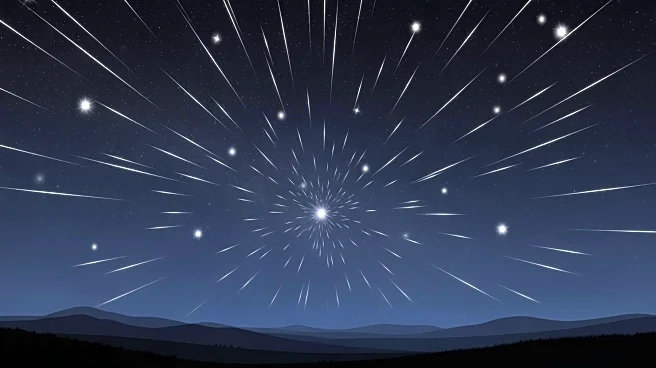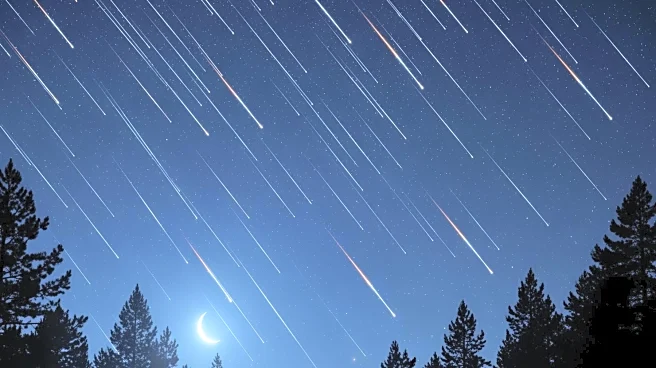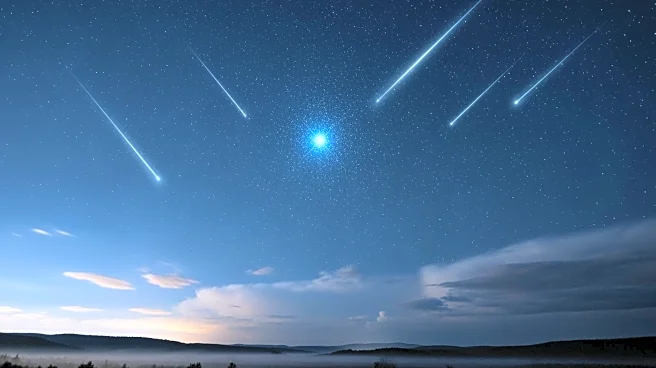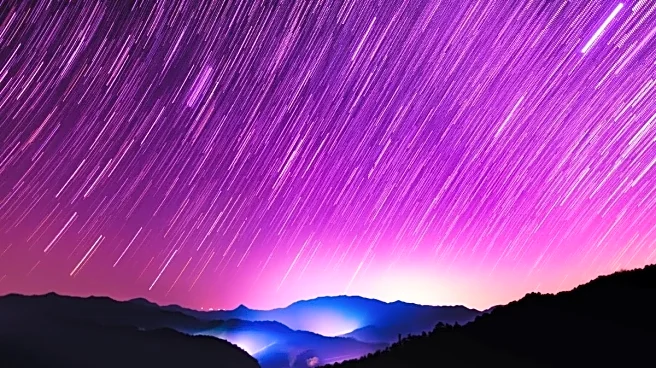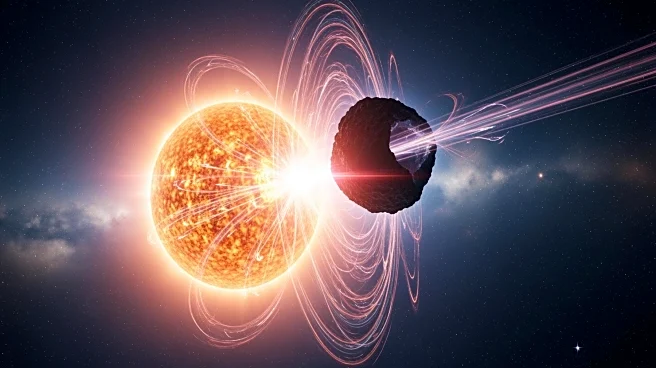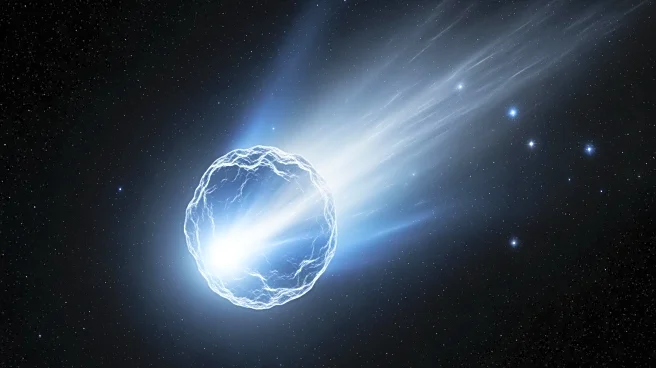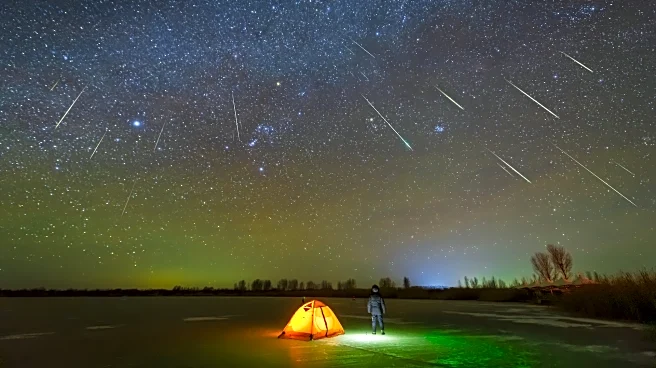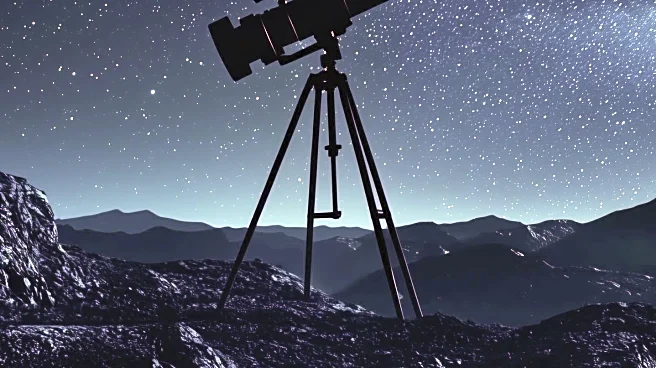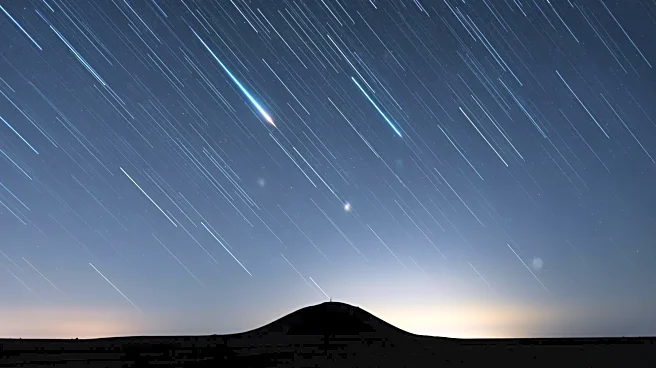What's Happening?
The Leonid meteor shower, known for its fast-moving meteors, is set to peak tonight, offering a dazzling display in the night sky. The shower, which originates from debris left by Comet 55P/Tempel-Tuttle,
will be visible under clear skies with minimal moonlight interference. Observers can expect to see around 10 to 15 meteors per hour, with the best viewing conditions occurring between midnight and sunrise.
Why It's Important?
Meteor showers like the Leonids provide a natural spectacle that can be enjoyed by the public, fostering interest in astronomy and science. The event offers an opportunity for educational outreach and engagement, encouraging people to learn more about celestial phenomena and the science behind them. Additionally, meteor showers contribute to our understanding of cometary debris and its interaction with Earth's atmosphere.
What's Next?
As the Leonid meteor shower continues, stargazers are encouraged to find locations away from city lights to maximize their viewing experience. The American Meteor Society and NASA provide guidance on optimal viewing times and conditions. Future meteor showers will continue to offer similar opportunities for observation and study, contributing to ongoing research in astronomy.
